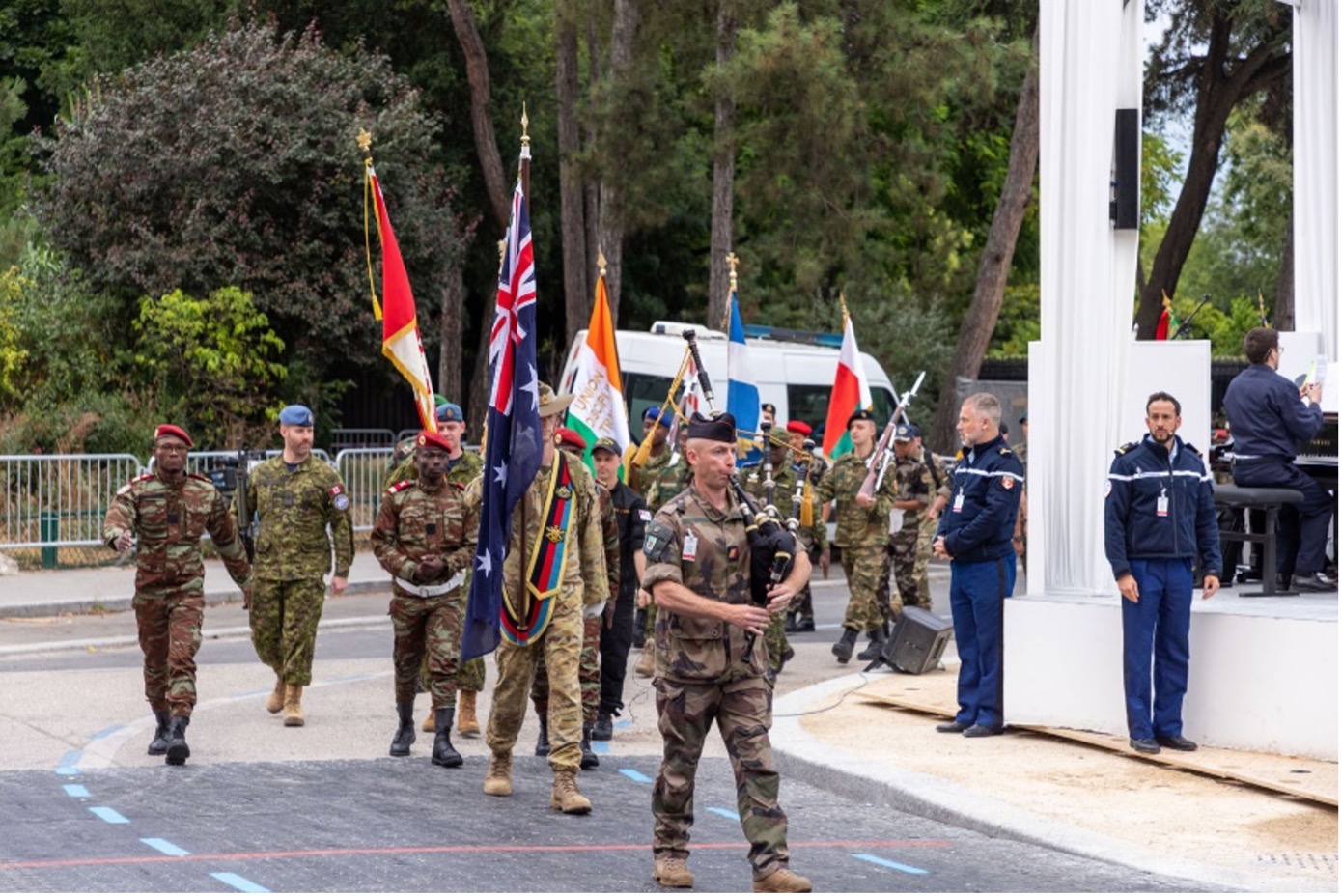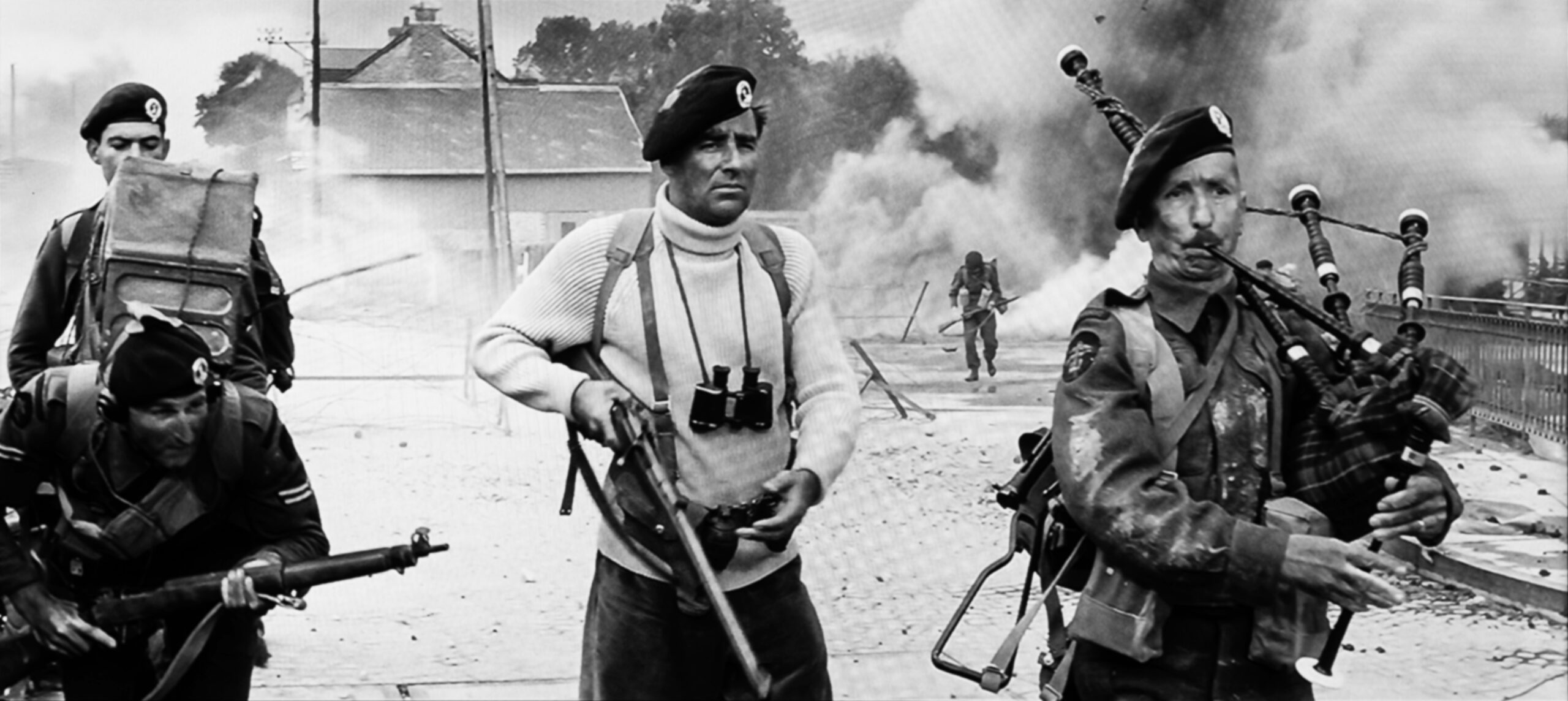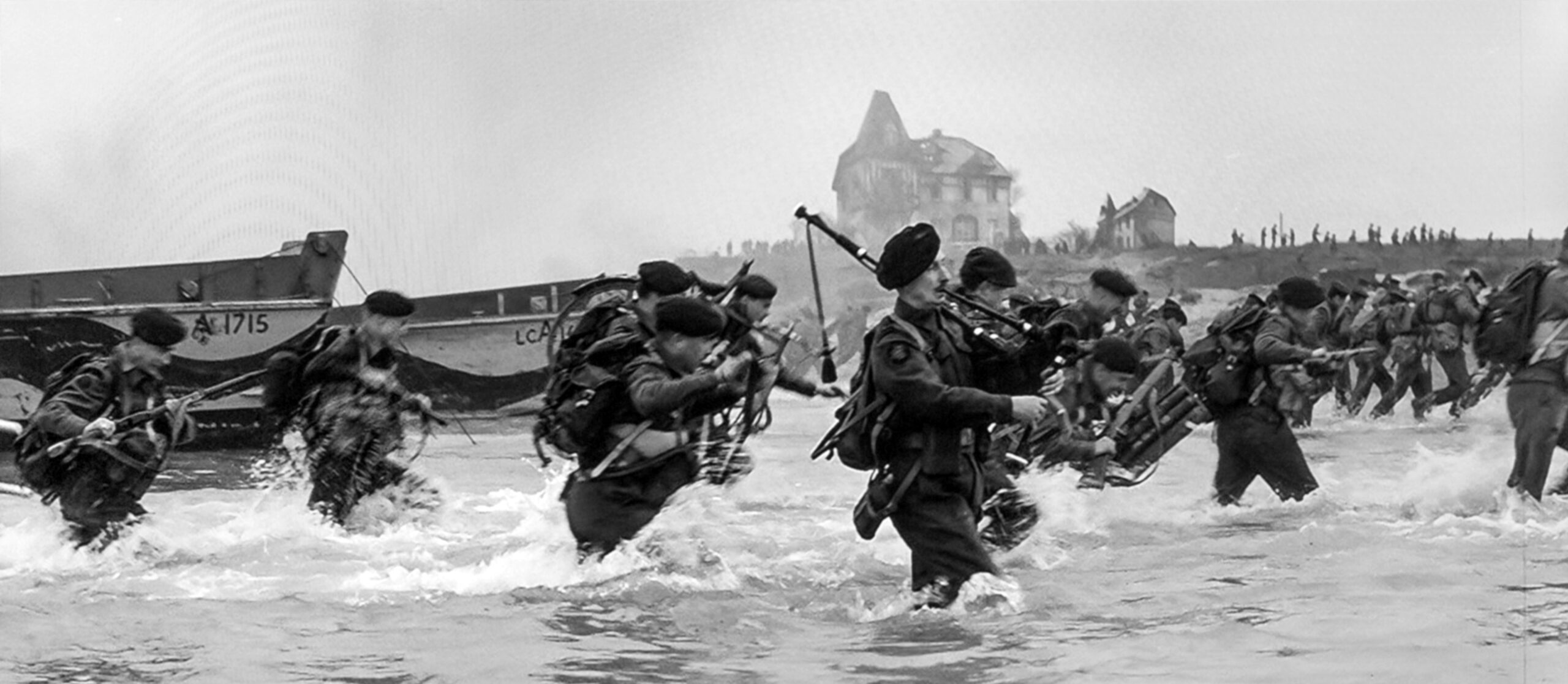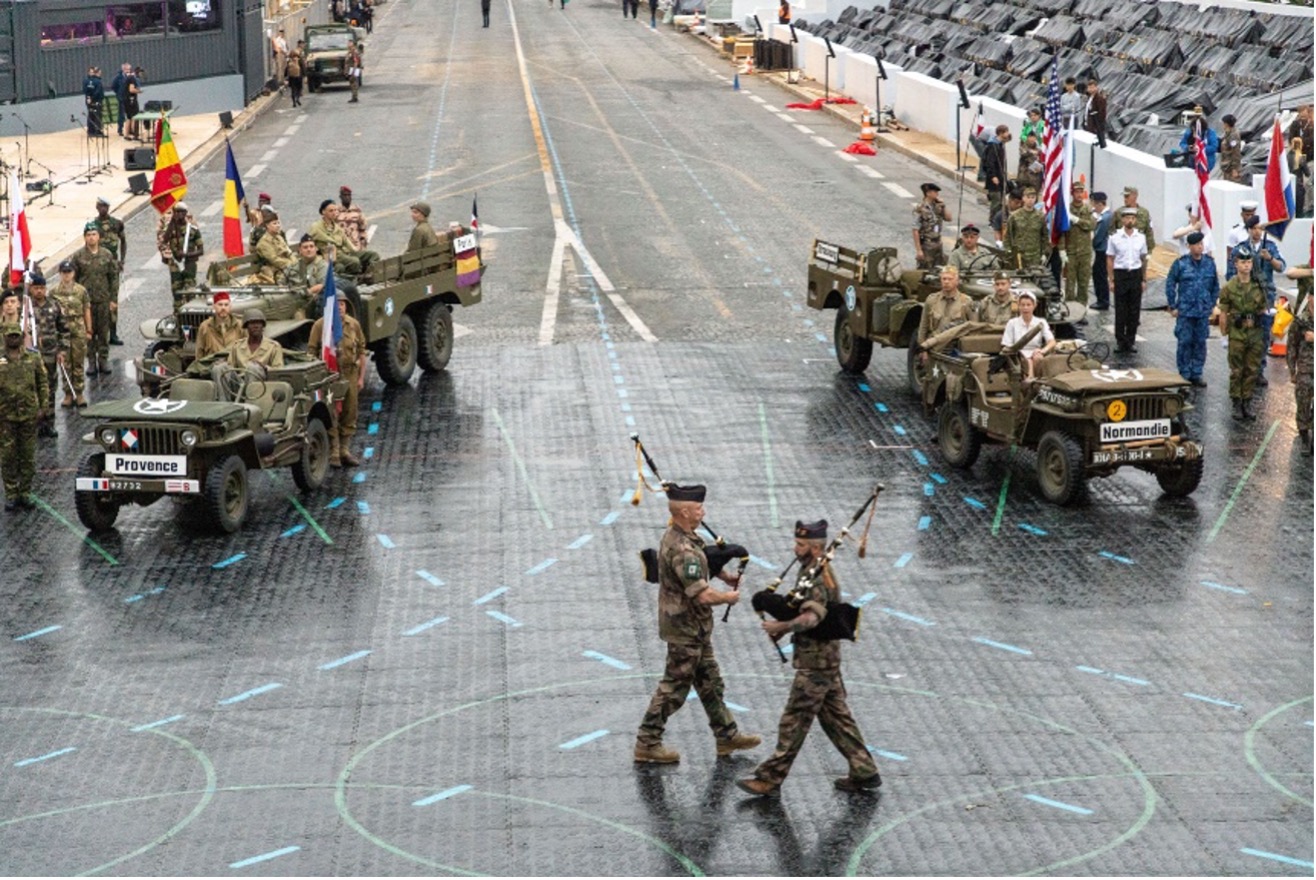In 2024, with the Olympic Games in full swing, the July 14 parade was held on Avenue Foch for the second time in its history. The opening of the parade was marked by a moving animation on the theme of the 80th anniversary of the Normandy landings and the Liberation of France. For many, the liberation of our country is closely linked to the Normandy landings on June 6, 1944. But let’s not forget that just over two months later, on August 15, the landings in Provence began.
 © Jean-José Wanègue
© Jean-José Wanègue
When we think of June 6, 1944, we all think of Darryl F. Zannuck’s film “The Longest Day”. The commemoration of the 80th anniversary of the landings began with Maurice Jarre’s famous music, followed by Glenn Miller’s pulsating “Sing Sing Sing”, performed by the Air and Space Band.
But perhaps regardless of the film’s music, this bagpipe tune sung by Scottish piper Bill Millin comes to mind. Although he has not yet reached terra firma, here he is performing “Hielan ‘Laddie” to galvanize the British soldiers of the First Special Brigade landing on Sword Beach at Colleville-Montgomery. This brigade was commanded by Lord Lovat, another Scot. It was at his request that he sang this tune, despite the fact that since the First World War, the British army had forbidden pipers to play their instrument in battle, due to the considerable losses they suffered during that conflict. A little later in the film, we find him crossing the Bénouville Bridge, better known as the Pegasus Bridge, without a moment’s hesitation under German bullets. Bill Millin had just become a legend, and one of the symbols of the Normandy landings.
 © The Longest Day
© The Longest Day
 © The Longest Day
© The Longest Day
To commemorate this heroic moment of the D-Day landings, master corporals Clément and Vincent from the brass band of the 9th BIMA (Brigade d’Infanterie de Marine) from Poitiers had the honor of performing one of the songs played by Bill Millin: “Blue Bonnets Over The Border”, a song played during the crossing of the bridge. In French, this title translates as “Les Bérets Bleus sont à la frontière”, a fitting title. The two pipers were followed in their march by soldiers representing the various Allied troops who had come to liberate France. Whether during the rehearsals or the parade, the powerful, rousing and penetrating music was bound to arouse emotion and a feeling of deep gratitude in all present.
In a way, it’s all those images from Darryl F. Zannuck’s film that run through our minds, with all those young soldiers who risked their lives to liberate a country that, for the most part, they didn’t know. The reality on that day, June 6, 1944, was probably far more deadly than the film lets on. But in the midst of these heroic deeds, Bill Millin continued to play his bagpipes, and his life was saved only by the astonishment he provoked in the enemy soldiers, bewildered by this “madman” braving the machine-gun fire with his music.
 © Jean-José Wanègue
© Jean-José Wanègue
But why did the bagpipe find its place among military troops, and particularly among Scottish regiments? Not only was it used for music and to mark the rhythm of marches, it could also be used to give orders on the battlefield, thanks to its sound level capable of drowning out the noise of battle. In fact, this very special instrument can reach levels in excess of 100 decibels in the open air. Not content with giving courage to the troops, it was also intended to impress enemy soldiers, even frightening those who heard it for the first time.
In his heroic march, 21-year-old Bill Millin became a legend on the longest day of June 1944. On the 69th anniversary of the Normandy landings in 2013, a statue of him was unveiled in Colleville-Montgomery. The most famous of pipers, who died in August 2010, was unable to attend the inauguration, even though he had approved the project when it was presented to him in 2009.
” Blue Bonnets Over the Border”, a tune that has crossed many borders since D-Day.
For those who want to relive the July 14, 2024 parade and see again these images of Bill Millin in “The Longest Day” just click on these links.




